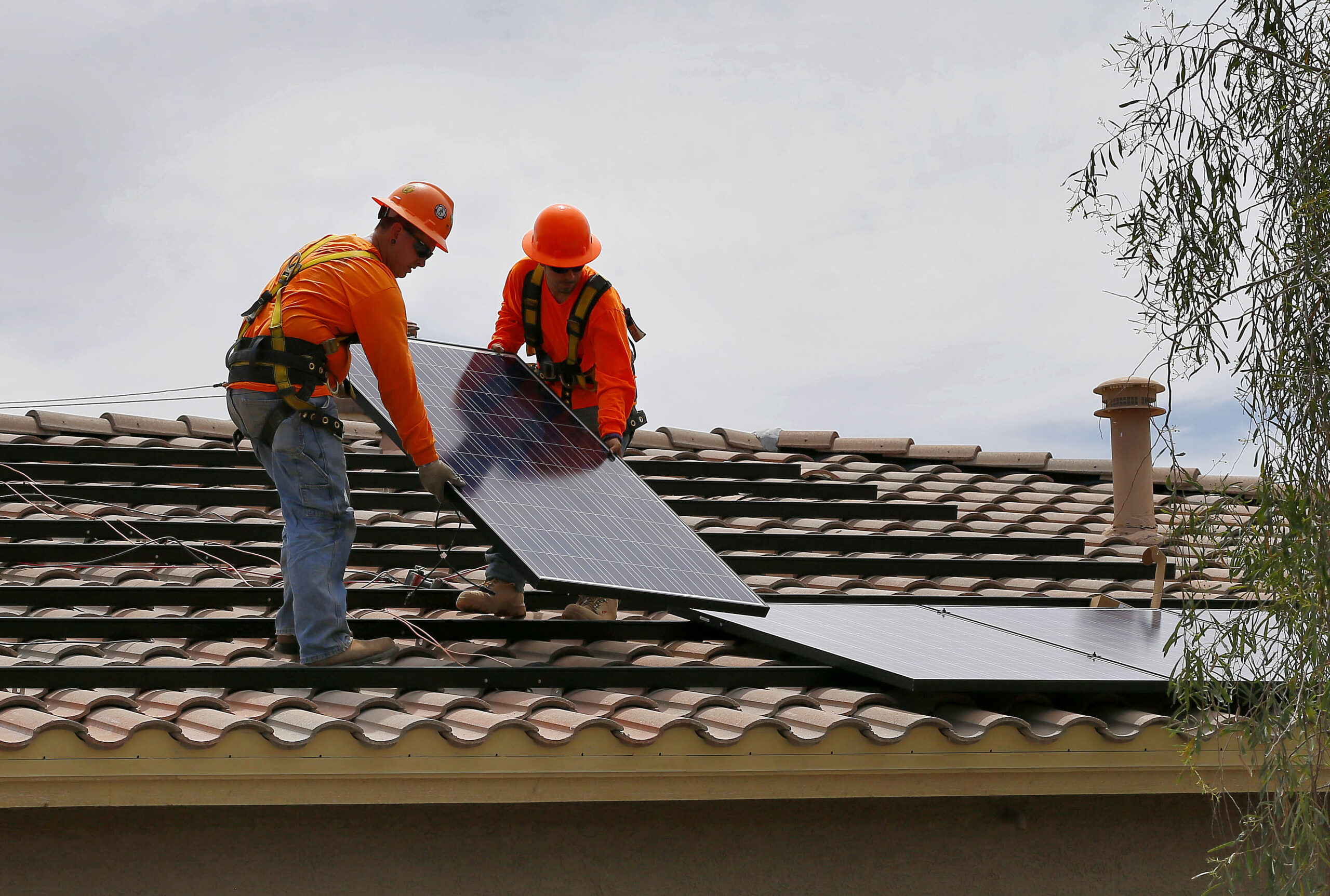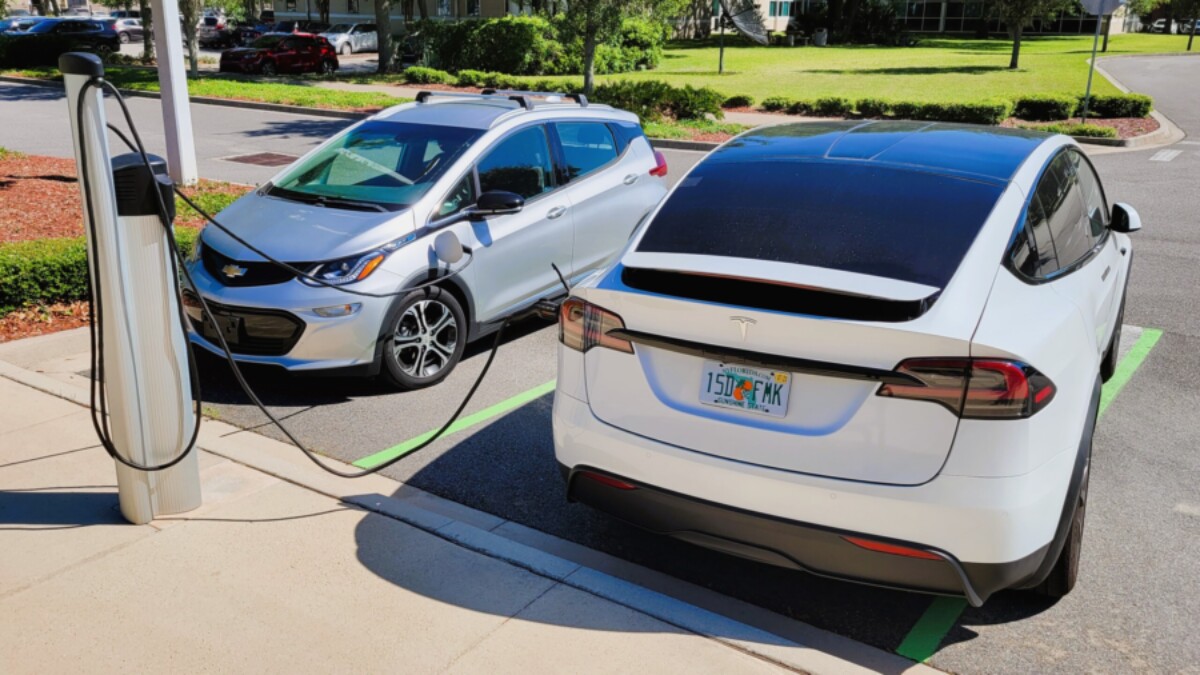JEA’s journey toward a cleaner energy future – as laid out in its recently approved “integrated resource plan” – will include embracing two clean electricity sources: nuclear and solar power.
But serious bumps in the road have rattled Jacksonville’s public utility on its way to a nuclear power source. And its move toward solar power has also proven difficult to execute. Looking ahead, a potential course correction looms – proposed tightening of federal regulations that would force utilities to largely eliminate carbon from their smokestack emissions.
An excess of carbon dioxide gas produced by the burning of fossil fuels – coal, natural gas and oil – is blamed for warming the atmosphere and causing climate change. About 25% of those carbon-laden gasses released in the U.S. come from electric utilities, according to federal environmental regulators.
For JEA’s first 100 years, the electric utility was a staid and stable business, but no more, explained CEO Jay Stowe at a recent public forum on the energy-mix plan, co-hosted by Jacksonville Today and JEA.
“It’s sort of cliche because people say that the world is changing a lot, and this industry is changing a whole lot,” Stowe said.
Recognizing this now fluid business environment, JEA board members recently agreed to accelerate reviews of integrated resource plans governing electricity generation, from once a decade to once every three years.
To reach its newly adopted goal of 35% clean energy by 2030, up from current 4%, JEA plans to expand its solar power generation to 24% of its power production, with nuclear power kicking in 11%.
How will it get there?
Solar: JEA gets serious about the sun
Solar power shows great promise as an energy source – 3.4% of electrical generation in the U.S. now comes from the sun, and it is growing faster than any other electricity source.
Solar power is expected to accelerate even further, thanks to now being the cheapest way to generate new electricity, a surge in solar panels on homes and businesses, and $391billion in climate change-reduction initiatives contained in last year’s federal Inflation Reduction Act.
And of course, solar power is advantageous because its does not produce greenhouse gasses like the burning of natural gas and coal do, and its fuel source – sunlight – is free.
Today, JEA generates just about 4% of its electricity from renewable sources, mostly solar. JEA officials have called its planned solar expansion to 24% by 2030 “a heavy lift,” while grassroots organizations such as Renew Jax say the utility needs to do more to decarbonize.
Nevertheless, the turn to solar power will require JEA to overcome three hurdles that utilities across the country are tackling.
Solar works well when the sun is shining. The sun does not shine at night, or on cloudy days, yet the demand for electricity is constant. Battery storage of excess electricity from the sun is a must, and while that technology has improved in recent years, those improvements will need to accelerate for solar power to match the reliability of 24/7 power generation on the scale of an electric utility.
Second, electric utility power grids will have to be upgraded to handle solar power, an expensive proposition that will take years. JEA will also have to develop an in-house expertise on operating solar to get the most out of its new energy source.
And JEA will need to figure out the best system for paying customers for the solar power they produce from their homes and businesses and feed back into the JEA power grid, Stowe says. That’s after it reduced the amount it paid customers for excess electricity in 2018, to the chagrin of rooftop solar installers, who blamed the move for hampering solar adoption.
Nuclear: Reliable and carbon-free
While nuclear power is a new energy source for JEA, it is not new. About 19% of U.S. electricity comes from nuclear power, and the plants have been in operation around the world for more than 50 years.
Still, JEA has been hurt by the types of cost overruns, construction delays, regulatory red tape and safety concerns that largely crippled the industry in recent decades. In fact, the expansion of Plant Vogtle in Georgia, which JEA invested in, is the only nuclear plant under construction in the country.
When JEA committed to the Plant Vogtle expansion in 2013, the cost of the project was pegged at $14 billion with the first of two new reactors generating power by 2016. As it nears completion seven years late, the final cost is expected to be more than $30 billion.
JEA tried to jettison its contract in 2018, but a court decision denied that.
To cover the costs, JEA officials said in 2022 that residential customers that use 1,000 KWH could see an average of $2.50 to $3.50 a month added to their base rate bill from fiscal years 2023-2032. JEA is scheduled to review its electric rates again in spring of 2024.
With all its problems, nuclear power has two big positives. It reliably generates massive amounts of electricity, and it does so without releases of carbon that come from burning natural gas and coal.
In recent years, people who champion the environment and fighting climate change have grudgingly come to accept nuclear power as part of the energy mix. Simply put, climate change is too advanced and the need to decarbonize so acute that nuclear power is needed, they argue.
Proponents include President Joe Biden’s administration, calling it “vital to achieving the nation’s goals of a carbon pollution-free electricity sector by 2035 and net-zero emissions economy-wide by 2050.”
Cracking down on carbon
As the Biden administration offers a carrot to support nuclear power, it is brandishing a large regulatory stick to crack down on burning of coal and natural gas to produce electricity.
Federal regulators recently proposed capping how much carbon dioxide pollution power plants can release.
Three courses will be open to power plants: install equipment that will strip the carbon from emissions – a technology that’s still in development and could be so costly to install that burning coal and natural gas would be too expensive – use clean-burning hydrogen as a fuel, or shut down completely.
The proposed regulations are expected to be open to public comment later this year and are sure to generate stiff opposition from the utility industry and from states that produce coal and natural gas. The critics argue that these restrictions are government overreach and threaten to destabilize the electric grid.
Another consideration: If a Republican wins the 2024 presidential election, it’s likely the tougher regulations would be weakened or even scrapped.
JEA has a large stake in how the final regulations turn out as it intends to produce 54% of its power with natural gas by 2030. JEA has begun to study the construction of a large natural gas burning power plant, which if built, would tie the utility to burning fossil fuels for much of its power for decades to come.
At present, JEA says it’s premature to project the expense or impact of new federal requirements.
“The proposed regulations may lead to a variety of changes in operations and needs in terms of technological solutions,” JEA spokesperson Karen McAllister wrote in an email. “Upon a final ruling on the proposed regulations, JEA will adapt accordingly and incorporate new requirements during the next Integrated Resource Plan.”








